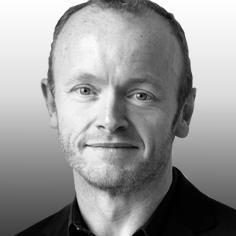Fast-paced changes in technology mean we have to think differently about the opportunities we provide for young talent

Last week I attended our annual conference - Autodesk University - in Las Vegas. As always, it was a really thought provoking event with colleagues, customers and industry leaders looking to the future of the design industry. As we head towards the new year, I wanted to draw on one of the themes which really jumped out at me during the event - namely the speed of change we are experiencing in our world.
Thirty years ago, the personal computer (PC) completely changed the way people work. Today, we are witnessing a new revolution with the convergence of the cloud and the billions of mobile devices in use today. Jeff Kowalski, our chief strategy officer, highlighted how a generational gap used to be defined at around 25 years. That’s 25 years between each generation in terms of their understanding of the world and classing themselves as living in a different generation. In recent years, this has changed beyond belief - in fact, Jeff outlined how a generational gap can now be considered to be only six years. This is truly remarkable - it means that our workforce in their late 20s and early 30s are already considered to be a different generation to our current graduates.
Physical location no longer matters, so the best talent can be sourced wherever they are to create unique, global teams based on expertise
In 2014, this fast-paced change will have a major impact on our industries and the talent they attract - particularly when you consider the opportunities being generated by the cloud and its infinite computing power. The cloud enables designers to collaborate, communicate, and crunch unprecedented amounts of data throughout the design process. Data stored in the cloud and applications running in the cloud can be accessed on all kinds of hardware including mobile devices.
Physical location no longer matters, so the best talent can be sourced wherever they are to create unique, global teams based on expertise. Although the cost of labour and materials is going up, the ability to have infinite computing power at a reduced cost is fundamentally changing the opportunities for businesses of all sizes. Simply speaking, the cloud is enabling designers to do what they couldn’t do before and is a clear example of this accelerated change in action.
But what does this mean for our working environments? For me, the emergence of so called “reverse mentoring” is something which struck a chord at Autodesk University and something that I’m increasingly speaking to customers about. In order to attract the best employees in your market, architectural, construction and engineering firms need to demonstrate that they are embracing technology at an accelerated rate and learning from the graduates entering the workplace - rather than relying on traditional methods and the experience of current employees.
Whether you’re in the business of designing and building cars, buildings, sewage works or consumer goods, the theme still applies. In 2014 businesses need to be innovative and forward looking, embracing technology at this accelerated rate. Only then will they keep up with the changing competitive landscape and attract the best staff.
Pete Baxter is vice president for engineering, natural resources and infrastructure sales for Autodesk in EMEA



























No comments yet